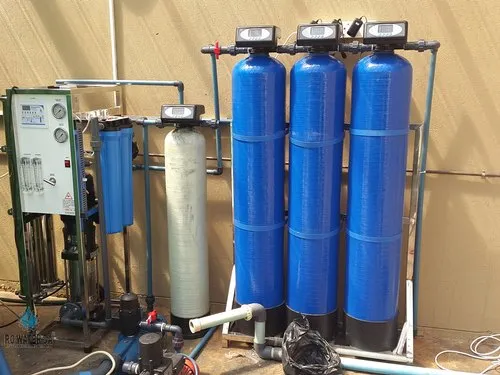Water softeners help your household reduce calcium and magnesium build-up that causes soap effectiveness to decrease dry skin/hair problems and shorten appliance lifespans. In addition, these water treatment solutions also prevent harmful contaminants like radium 226/228 and barium from entering your water supply and the environment.
To explore various types of water softener systems and their advantages and disadvantages, check out this informative resource
Table of Contents
1. Consider your water hardness levels
Millions of households struggle with hard water, and water softeners are an invaluable way to address it.
A water softener can eliminate limescale build-up, mineral residue build-up, dry skin, spotty dishes and inefficient appliances while increasing the overall efficiency of appliances and devices. But which softener best meets your household’s hardness scale, size requirements and technology demands?
Test the water hardness in your home with a test strip and compare its results against a color chart provided with your kit. Parts per million (ppm), milligrams per liter, and parts per million of mineral content are the other options for data formats; the majority of results will be provided in grains per gallon (gpg) by multiplying 17.1, you can get back grains per gallon.
Once you know your hardness level, it’s essential to determine the capacity you require in a water softener. A formula that considers water usage (in gallons) and hardness levels should be used before multiplying these figures to establish how much water will be consumed each week and how many grains the softener must remove from your drinking supply.
2. Consider your water usage
Your water softener size depends on how your household uses water daily. An undersized unit could run out of capacity too quickly, while an oversized softener wastes resources and money.
An approximate estimate of your family’s daily water consumption can be gained by reviewing past bills or using an online water consumption calculator. You can also estimate daily softening requirements by multiplying the number of people in your household by 75 (the amount used per person per day).
Once you’ve calculated an estimate of your family’s water usage, you can assess how many grains of hardness minerals they require daily and select a water softener accordingly.
To minimize salt intake while drinking and cooking water is being prepared separately from hot water systems, connect only your softener to the hot water system; use under-the-sink filtration systems or reverse osmosis systems instead if possible to filter and purify drinking and cooking water before use – this way traces of salt aren’t being introduced directly into food and drinks!
3. Consider your budget
Water softeners can be expensive investments for any household, costing several thousand dollars or more depending on your home needs and brand preferences. Before shopping for one, establish a budget to narrow down your choices and find something within your price range.
You should also carefully examine how much it will cost to maintain your water softener. These include salt purchases, filter replacement costs and repairs, and energy consumption; larger water softeners may require more energy. You must understand how much water your household consumes every day to determine your power usage needs accordingly.
Traditional salt-based water softeners are the least costly option yet require regular refilling with sodium ions. You could also opt for one using potassium chloride, an affordable salt substitute. This may be better suited for households looking to minimize their sodium consumption.
4. Consider your family’s needs
Before purchasing a water softener, it’s essential to understand why and your family’s needs for one. These devices can help solve numerous issues related to soap or shampoo lather failure, bathtub rings, spots on dishes, dingy laundry, and scale deposits in sinks and appliances.
Water softener can improve the sense of taste of your drinkable water and minimize staining on fixtures and clothing, helping lower energy costs while improving the energy efficiency of appliances and making your hair and skin feel softer.
Water softeners come in an assortment of sizes designed to suit different households. Determine the daily gallon use of your family and multiply the result by the water hardness level to determine which model is best for you.
This will determine how many grains of salt need to be removed daily. Alternatively, dual-tank models may offer greater reliability by dispensing soft water while the resin in their main tank regenerates, eliminating interruptions during regeneration cycles.
5. Consider your options
There is an assortment of water softeners on the market to choose from, and finding one that matches both your water supply and budget should not be difficult when searching for NSF-certified models to ensure safe operation.
Salt-based models soften water by exchanging calcium and magnesium carbonates via an ion exchange process, regularly replenishing sodium ions to keep using them. Many professionals suggest choosing one that uses less salt for increased safety for households concerned about sodium intake.
Salt-free water softeners can also be found on the market, which remove hardness without needing maintenance or salt usage – though they typically require more initial investment than salt-based models.
Small homes without permanent needs should consider using an electronic or magnetic water softener as an interim solution. These plug-in devices connect directly to their water line and change the electromagnetic properties of calcium-carbonate minerals so they repel each other instead of sticking onto pipes and each other. Some companies even offer monthly service contracts for these units.

